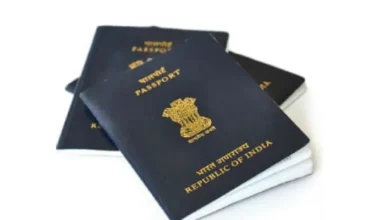Mumbai Rain Update: Water Stock In City’s 7 Lakes Nears Full Capacity At 89.27%

Recent heavy rains have significantly increased the water levels in the lakes that supply drinking water to Mumbai. According to data from the Brihanmumbai Municipal Corporation (BMC), the combined water stock in these seven reservoirs has reached 89.27 per cent of their total capacity, amounting to 12,92,030 million litres.
Reservoir Water Levels
The individual water levels in these reservoirs vary: Tansa is at 98.61 per cent, Modak Sagar at full capacity with 100 per cent, Middle Vaitarna at 95.85 per cent, Upper Vaitarna at 82.98 per cent, Bhatsa at 86.36 per cent, Vehar at 72.52 per cent, and Tulsi at 85.02 per cent.
The BMC provides daily water supply from these lakes: Upper Vaitarna, Modak Sagar, Tansa, Middle Vaitarna, Bhatsa, Vihar, and Tulsi. The Lower (Modak Sagar), Middle and Upper Vaitarna lakes along with Tansa serve the western suburbs from Dahisar Check Naka to Bandra and extend to Mahim and Malabar Hill.
Distribution System
The Bhatsa system comprises Bhatsa, Vehar, and Tulsi lakes. Water from this system is treated at the Panjarpur Water Treatment Plant before being distributed across eastern Mumbai. This includes areas from Mulund Check Naka to Sion and further to Mazgaon.
Weather forecasts predict a generally cloudy sky with light rain throughout the day for Mumbai and its suburbs. The Indian Meteorological Department’s Santacruz observatory recorded a maximum temperature of 31.5 degrees Celsius and a minimum of 26.5 degrees Celsius on Tuesday.
Weather Updates
Meanwhile, Colaba observatory reported temperatures ranging from a high of 31.4 degrees Celsius to a low of 26.6 degrees Celsius as part of the latest weather updates for Mumbai.
The first high tide is expected at 9:44 AM with a height of 3.52 meters while the second will occur at 9:11 PM reaching up to 2.97 meters. Low tide is forecasted for 3:57 PM with a level of 2.44 meters followed by another low tide at 3:19 AM on August 6 measuring approximately 1.25 meters.
Residents living in coastal or low-lying areas should remain vigilant during high tide periods due to potential flooding risks associated with elevated water levels.









